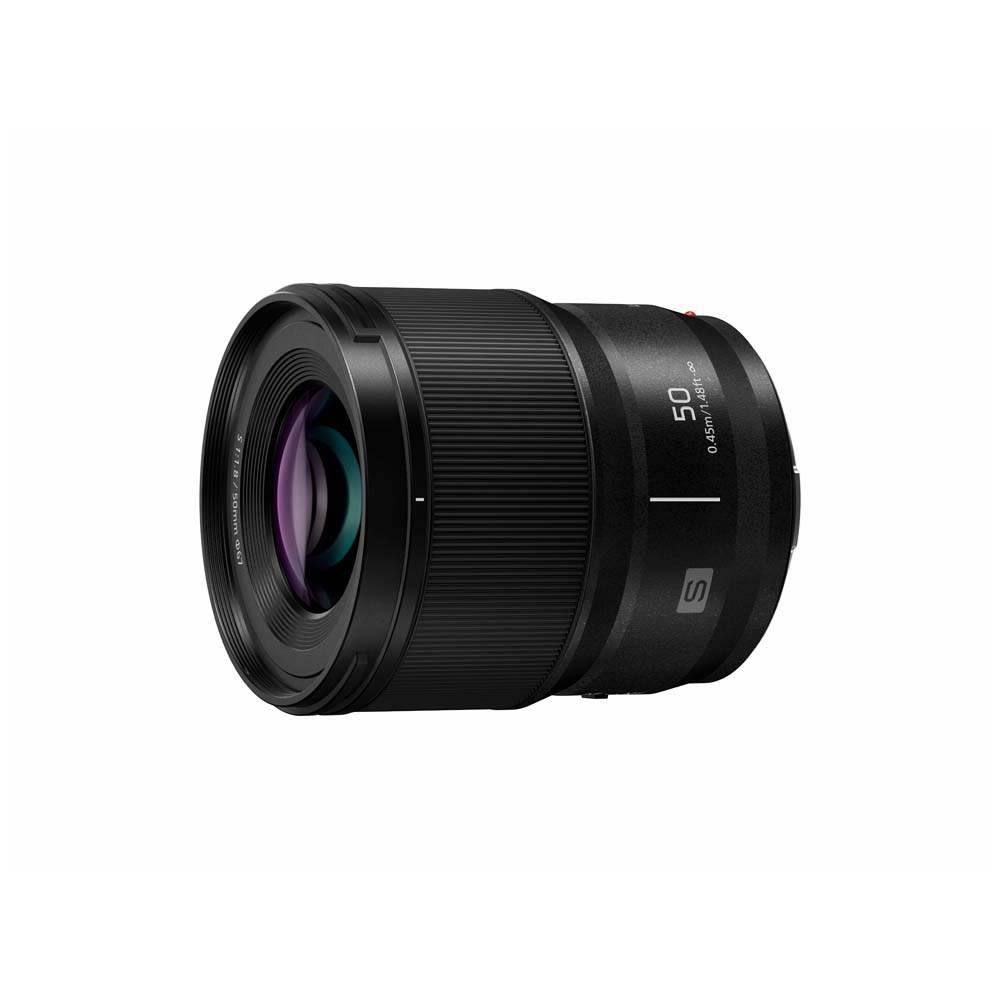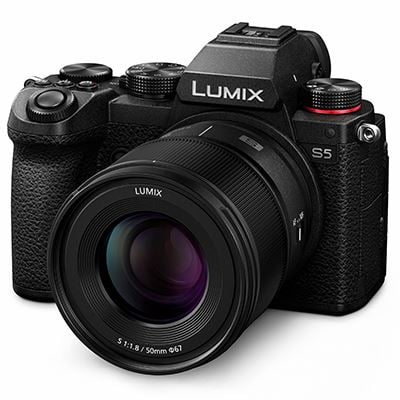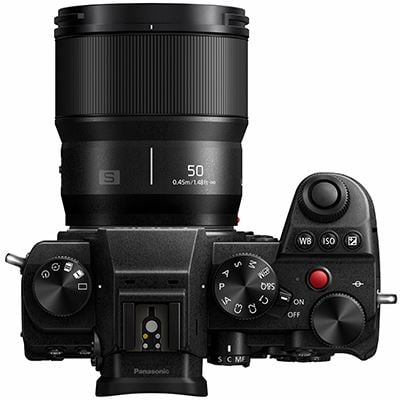The ever-expanding arsenal of L-mount lenses now includes a light and compact f/1.8 50mm from Panasonic. It complements the existing 85mm f/1.8 and the forthcoming 24mm and 35mm siblings.
The Lumix S 50mm F1.8 is the same size as the 85mm and shares the same centre of gravity and control placement, making it attractive to videographers who will need to make minimal adjustments when changing lenses. It weighs just 300g.
With nine elements, including an ED (Extra-low Dispersion) and one UHR (Ultra High Reflective), the Lumix S F1.8 incorporates three aspherical surfaces. A nine-blade aperture is said to ensure circular out-of-focus highlights as the lens is stopped down.
Focus is driven by a linear motor and the lens features minimal focus breathing and micro-step aperture control for smooth changes, another feature to please videographers. Minimum focus distance is 45 cm and the maximum magnification is 0.14x.
PRESS RELEASE
Panasonic Expands Lens Lineup with New F1.8 Large-Aperture Fixed Focal Length Lens for the LUMIX S Series
Compact, Lightweight Standard LUMIX S 50mm F1.8 (S-S50)
Panasonic is pleased to introduce a new large-aperture standard fixed focal length lens, the LUMIX S 50mm F1.8 (S-S50), as the second addition to the series of four F1.8 large-aperture lenses based on the L-Mount system standard. A total of four F1.8 lenses from the LUMIX S Series feature a common size and position of control parts which, for example, make it easy to exchange lenses quickly when the camera is on a gimbal with minimum adjustment of connected gears. In addition, because the diameter is consistent, users can also apply the same filters across this set of lenses. The filter diameter is 67 mm, with a 9-blade circular aperture diaphragm.
The LUMIX S 50mm F1.8 is comprised of nine lens elements in eight groups including three aspherical lenses, one ED (Extra-Low Dispersion) lens and one UHR (Ultra-High Refractive Index) lens. Three aspherical lenses achieve high descriptive performance and beautiful bokeh across all F1.8 lenses in the series, and are suitable for a wide range of images, from portrait to landscape. Notably, the ED lens effectively suppresses chromatic aberration.
The LUMIX S 50mm F1.8 also excels in video recording performance with a mechanism that suppresses focus breathing, previously a fatal problem of all interchangeable lenses designed for still image photography. This advantage, together with a micro-step aperture control for smooth exposure change produces professional quality video.
Compact, lightweight (approximately 300g), dust/splash-resistant, and able to withstand use under harsh conditions as low as 14 degrees Fahrenheit, the LUMIX 50mm F1.8 is designed for excellent mobility.
The new 24mm and 35 mm F1.8 large-aperture lenses are also under development to further enhance the LUMIX S Series lens lineup. The Panasonic and L-Mount system alliance is committed to the development of L-Mount lenses for the further expansion of its lineup to fulfil the needs of customers.
The LUMIX 50mm F1.8 will be available from the end of June at a recommended retail price of £429, including tax.
Find more details, a sample gallery and full specification at DPReview
Available to order from London Camera Exchange, Wex Photographic and Park Cameras.
Make a donation to help with our running costs
Did you know that Macfilos is run by five photography enthusiasts based in the UK, USA and Europe? We cover all the substantial costs of running the site, and we do not carry advertising because it spoils readers’ enjoyment. Every amount, however small, will be appreciated, and we will write to acknowledge your generosity.




I have the LUMIX 85mm f1.8 lens. It is superb. If this new 50mm matches that quality it will be a great addition to the growing repertoire of L-mount lenses.
More options is good for everybody! And certainly when they are lightweight and compact! As a side note, the Summicron-SL 28mm is in stock pretty much everywhere now in the US. I really have the impression that the momentum (of the Leica SL lenses) has slowed significantly. I am curious to see whether it can pick up again with the still to be released 24mm and 21mm.
Leica and we are blessed to have Panasonic and Sigma keeping the Leica SL and CL systems healthy. It is great to be able to mix and match cameras and glass. I love the Panasonic 50 1.4. A nifty fifty is my core focal length and it allows me the creative choices I want. If I want light, I use my amazing Voigtlander 50/3.5 which is tiny and pairs nicely with the Summaron 28/5.6.
The rest of my L mount glass will be no faster than f/2 as I cannot enjoy the weight of my camera bag. I chose a fast fifty for my style of photography.
It is great that we are quickly getting lots of great choices to suit our personal tastes.
I should have said f/1.8 instead of f/2 as they are in the similar size range for a lot of lenses. I think the f/1.8 and f1.9 lenses are made to sound fast but there is no significant difference to f/2 glass.
The Sigma Contemporary I series might be more compact, maybe? But also maybe heavier. And there is no 50mm (just 65mm). I have the 65 and the 35, and they are both nice lenses, very well made, and f2.
I will await the 24/1.8 from Panasonic, as it might be a nice focal length for the CL and the S5.
Hello Mike, today the f/1.8 lenses are the smart solution! I just had the hope the lens would be smaller. The Panasonic f/1.4 is a nightmare!
It is. Yet whatever the size, we can’t complain about 300g in weight. That’s M lens territory.
Compact??? Filtersize 67mm ??
Einverstanden, Andreas, but here we are talking relatively. Almost all L-mount autofocus lenses are huge (when compared, for instance, with our tiny M lenses) but I have to assume they don’t make them so big just to be difficult. There must be a reason. So when we get something that is smaller and lighter than the rest, it has to be pointed out.
I would take an f/1.8 of f/2 in preference to a much bigger 1.2 or 1.4 because I don’t want to carry the extra weight and (apart from the wafer-thin depth of field of the faster lenses)there is now little need for ultra-fast (and ultra-large) lenses simply from a light point of view.
Hah! Well, relatively it’s compact compared to the Hubble telescope”
Whatever the reasoning you come up with this is NOT compact in our hands.
I’d honestly rather go and find an old Olympus OM, Nikon or Pentax with a REAL compact standard lens and get a roll of film than buy into this kind of product.If it’s that ‘compact’ it better be at least a 90mm!